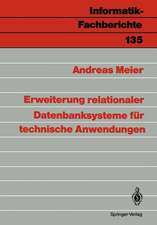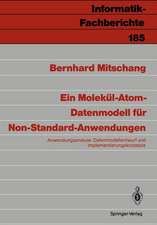Practical Splunk Search Processing Language: A Guide for Mastering SPL Commands for Maximum Efficiency and Outcome
Autor Karun Subramanianen Limba Engleză Paperback – 24 noi 2020
Use this practical guide to the Splunk operational data intelligence platform to search, visualize, and analyze petabyte-scale, unstructured machine data. Get to the heart of the platform and use the Search Processing Language (SPL) tool to query the platform to find the answers you need.
With more than 140 commands, SPL gives you the power to ask any question of machine data. However, many users (both newbies and experienced users) find the language difficult to grasp and complex. This book takes you through the basics of SPL using plenty of hands-on examples and emphasizes the most impactful SPL commands (such as eval, stats, and timechart). You will understand the most efficient ways to query Splunk (such as learning the drawbacks of subsearches and join, and why it makes sense to use tstats). You will be introduced to lesser-known commands that can be very useful, such as using the command rex to extract fieldsand erex to generate regular expressions automatically.
In addition, you will learn how to create basic visualizations (such as charts and tables) and use prescriptive guidance on search optimization. For those ready to take it to the next level, the author introduces advanced commands such as predict, kmeans, and cluster.
With more than 140 commands, SPL gives you the power to ask any question of machine data. However, many users (both newbies and experienced users) find the language difficult to grasp and complex. This book takes you through the basics of SPL using plenty of hands-on examples and emphasizes the most impactful SPL commands (such as eval, stats, and timechart). You will understand the most efficient ways to query Splunk (such as learning the drawbacks of subsearches and join, and why it makes sense to use tstats). You will be introduced to lesser-known commands that can be very useful, such as using the command rex to extract fieldsand erex to generate regular expressions automatically.
In addition, you will learn how to create basic visualizations (such as charts and tables) and use prescriptive guidance on search optimization. For those ready to take it to the next level, the author introduces advanced commands such as predict, kmeans, and cluster.
What You Will Learn
- Use real-world scenarios (such as analyzing a web access log) to search, group, correlate, and create reports using SPL commands
- Enhance your search results using lookups and create new lookup tables using SPL commands
- Extract fields from your search results
- Compare data from multiple time frames in one chart (such as comparing your current day application performance to the average of the past 30 days)
- Analyze the performance of your search using Job Inspector and identify execution costs of various components of your search
Who This Book Is For
Application developers, architects, DevOps engineers, application support engineers, network operations center analysts, security operations center (SOC) analysts, and cyber security professionals who use Splunk to search and analyze their machine data
Preț: 295.58 lei
Preț vechi: 369.47 lei
-20%
Puncte Express: 443
Preț estimativ în valută:
52.33€ • 60.93$ • 45.46£
52.33€ • 60.93$ • 45.46£
Carte tipărită la comandă
Livrare economică 23 februarie-09 martie
Preluare comenzi: 021 569.72.76
Specificații
ISBN-13: 9781484262757
ISBN-10: 1484262751
Pagini: 268
Ilustrații: XXI, 268 p. 134 illus.
Dimensiuni: 178 x 254 x 18 mm
Greutate: 0.51 kg
Ediția:1st ed.
Editura: Apress
Colecția Apress
Locul publicării:Berkeley, CA, United States
ISBN-10: 1484262751
Pagini: 268
Ilustrații: XXI, 268 p. 134 illus.
Dimensiuni: 178 x 254 x 18 mm
Greutate: 0.51 kg
Ediția:1st ed.
Editura: Apress
Colecția Apress
Locul publicării:Berkeley, CA, United States
Cuprins
Chapter 1: Introducing the Splunk Platform.- Chapter 2: Calculating Statistics.- Chapter 3: Using Time-Related Operations.- Chapter 4: Grouping and Correlating.- Chapter 5: Working with Fields.- Chapter 6: Using Lookups.- Chapter 7: Advanced SPL Commands. Chapter 8: Less Common Yet Impactful SPL Commands.- Chapter 9: Optimizing SPL.
Notă biografică
Karun Subramanian is an IT operations expert and a Splunk certified architect. He is committed to helping IT organizations implement world-class observability by making use of machine-generated data. His IT career has spanned more than two decades, ranging from systems administrator to software engineer to IT director. Possessing deep expertise of the Splunk platform, he has assisted teams to solve complex problems in the area of DevOps, security, and business analytics. He has worked in engineering roles for firms including Wells Fargo Bank, Express Scripts, Federal Reserve Bank, and Optum.
Textul de pe ultima copertă
Use this practical guide to the Splunk operational data intelligence platform to search, visualize, and analyze petabyte-scale, unstructured machine data. Get to the heart of the platform and use the Search Processing Language (SPL) tool to query the platform to find the answers you need.
With more than 140 commands, SPL gives you the power to ask any question of machine data. However, many users (both newbies and experienced users) find the language difficult to grasp and complex. This book takes you through the basics of SPL using plenty of hands-on examples and emphasizes the most impactful SPL commands (such as eval, stats, and timechart). You will understand the most efficient ways to query Splunk (such as learning the drawbacks of subsearches and join, and why it makes sense to use tstats). You will be introduced to lesser-known commands that can be very useful, such as using the command rex to extract fields and erex to generate regular expressions automatically.
In addition, you will learn how to create basic visualizations (such as charts and tables) and use prescriptive guidance on search optimization. For those ready to take it to the next level, the author introduces advanced commands such as predict, kmeans, and cluster.
With more than 140 commands, SPL gives you the power to ask any question of machine data. However, many users (both newbies and experienced users) find the language difficult to grasp and complex. This book takes you through the basics of SPL using plenty of hands-on examples and emphasizes the most impactful SPL commands (such as eval, stats, and timechart). You will understand the most efficient ways to query Splunk (such as learning the drawbacks of subsearches and join, and why it makes sense to use tstats). You will be introduced to lesser-known commands that can be very useful, such as using the command rex to extract fields and erex to generate regular expressions automatically.
In addition, you will learn how to create basic visualizations (such as charts and tables) and use prescriptive guidance on search optimization. For those ready to take it to the next level, the author introduces advanced commands such as predict, kmeans, and cluster.
What You Will Learn
- Use real-world scenarios (such as analyzing a web access log) to search, group, correlate, and create reports using SPL commands
- Enhance your search results using lookups and create new lookup tables using SPL commands
- Extract fields from your search results
- Compare data from multiple time frames in one chart (such as comparing your current day application performance to the average of the past 30 days)
- Analyze the performance of your search using Job Inspector and identify execution costs ofvarious components of your search
This book is for application developers, architects, DevOps engineers, application support engineers, network operations center analysts, security operations center (SOC) analysts, and cyber security professionals who use Splunk to search and analyze their machine data.
Karun Subramanian is an IT operations expert and a Splunk certified architect. He is committed to helping IT organizations implement world-class observability by making use of machine-generated data. His IT career has spanned more than two decades, ranging from systems administrator to software engineer to IT director. Possessing deep expertise of the Splunk platform, he has assisted teams to solve complex problems in the area of DevOps, security, and business analytics. He has worked in engineering roles for firms including Wells Fargo Bank, Express Scripts, Federal Reserve Bank, and Optum.
Caracteristici
Serves as a quick reference for the most popular SPL commands Provides detailed guidance on improving the performance of SPL commands Teaches SPL through the use of numerous real-world examples



























